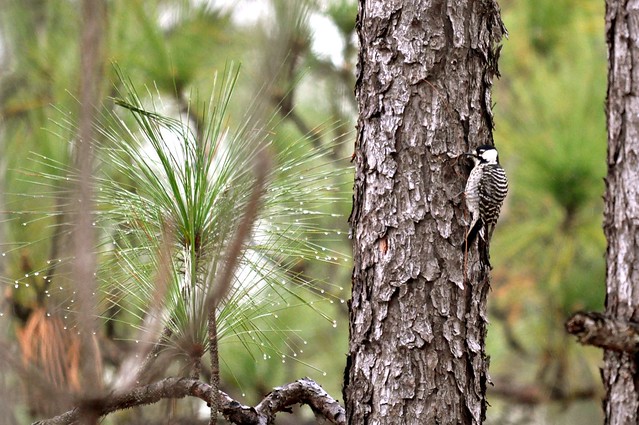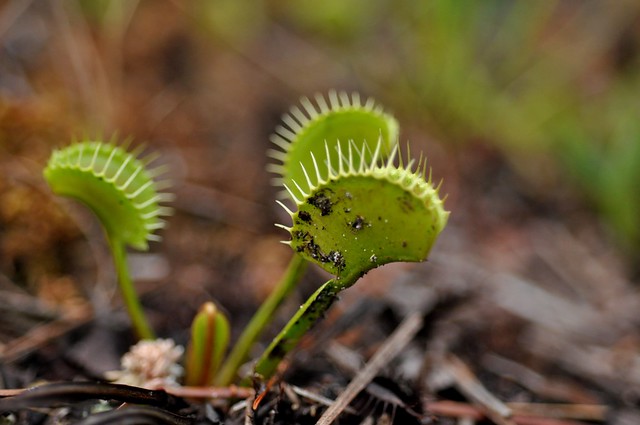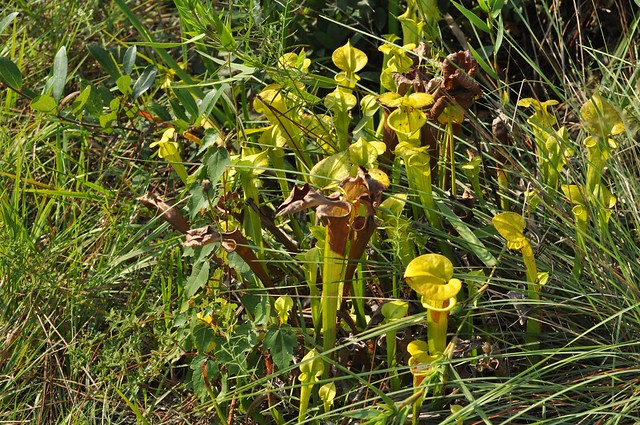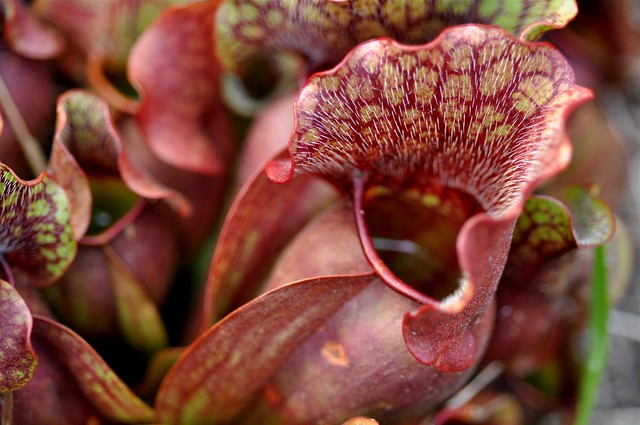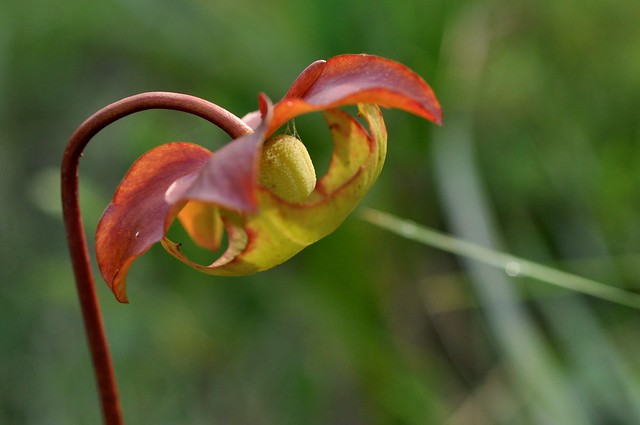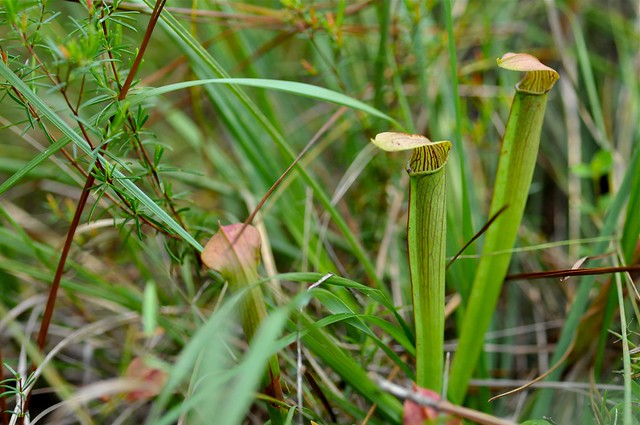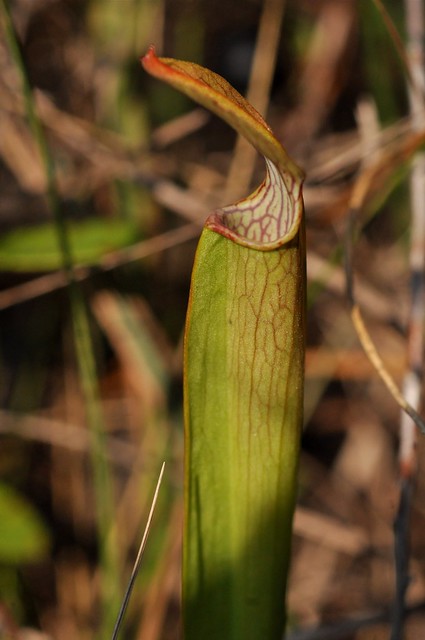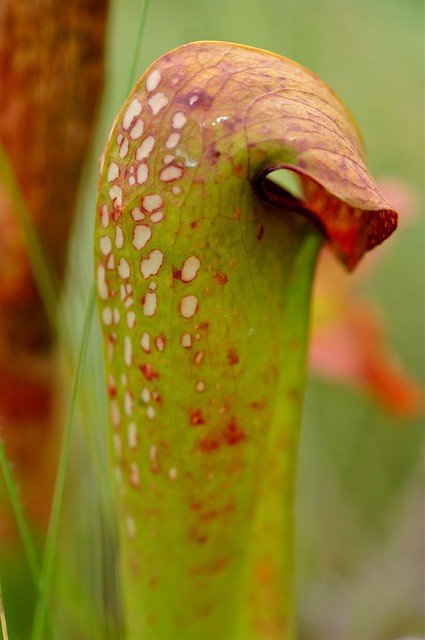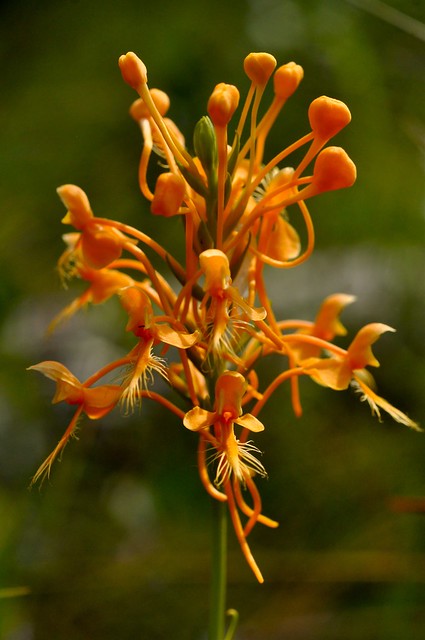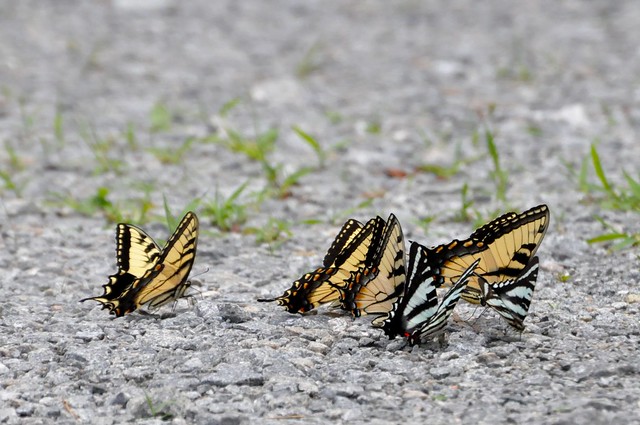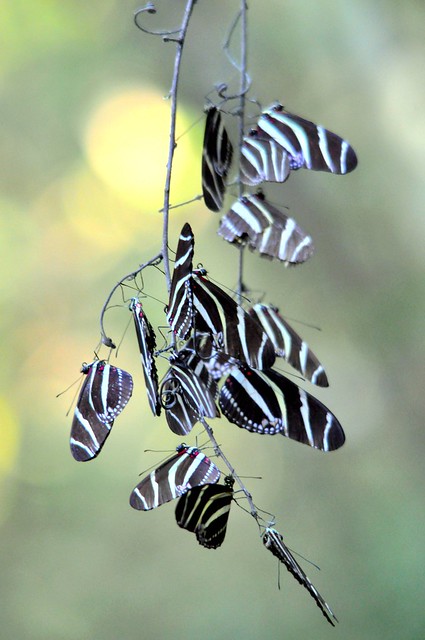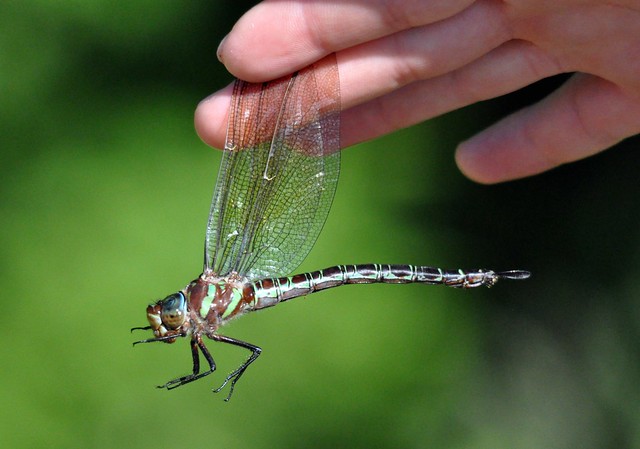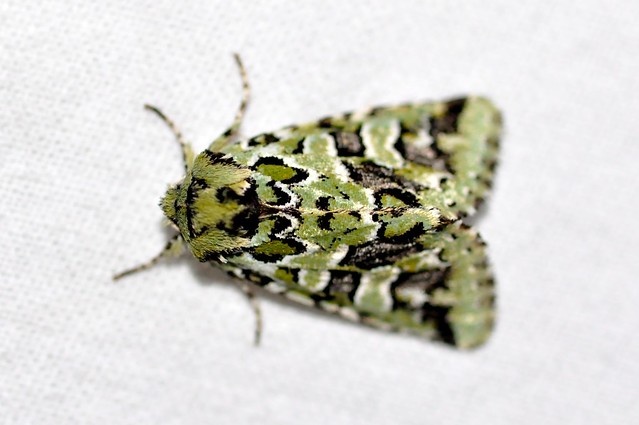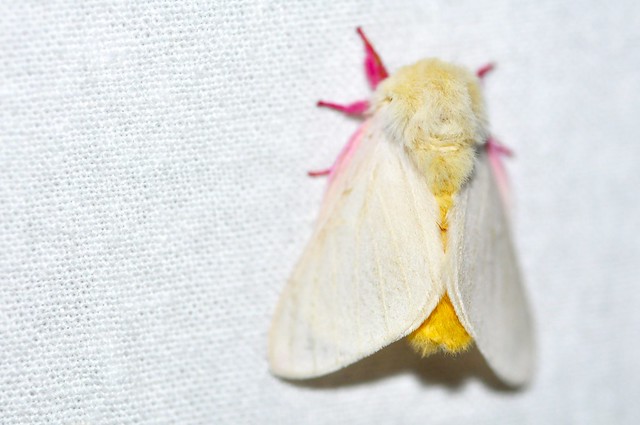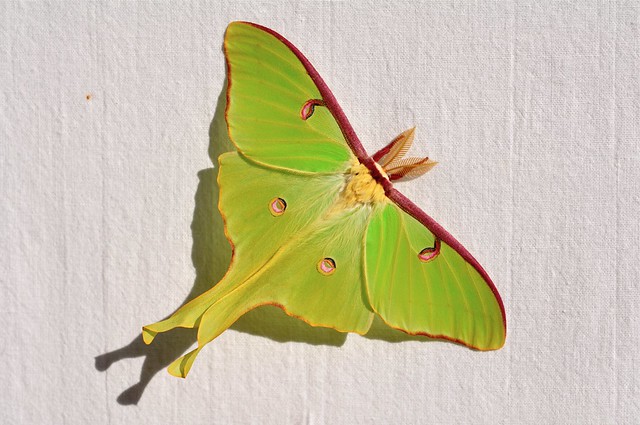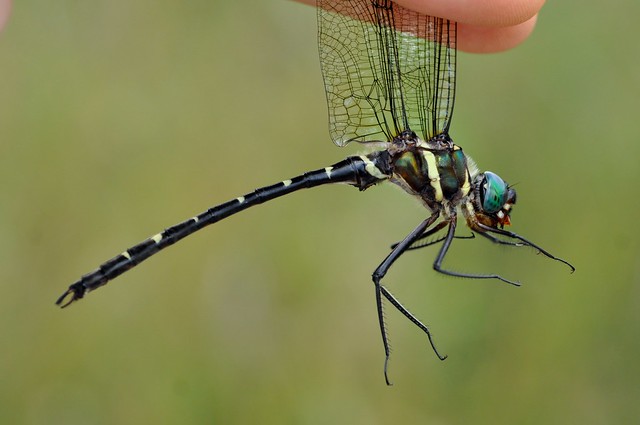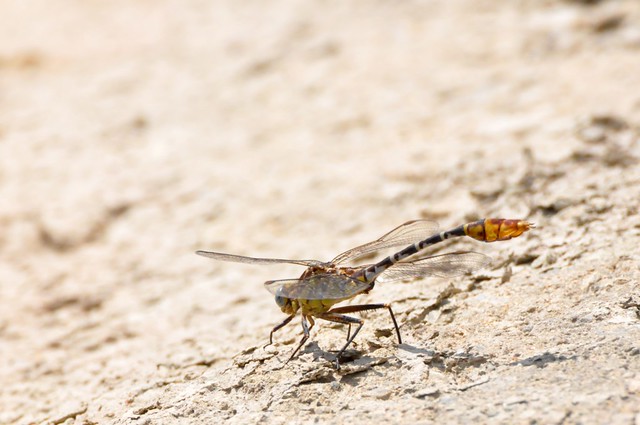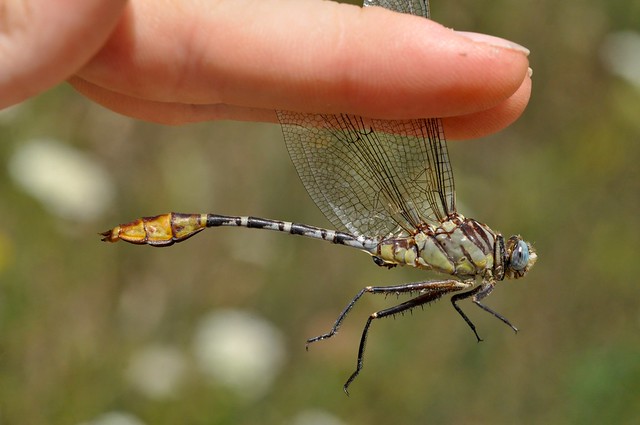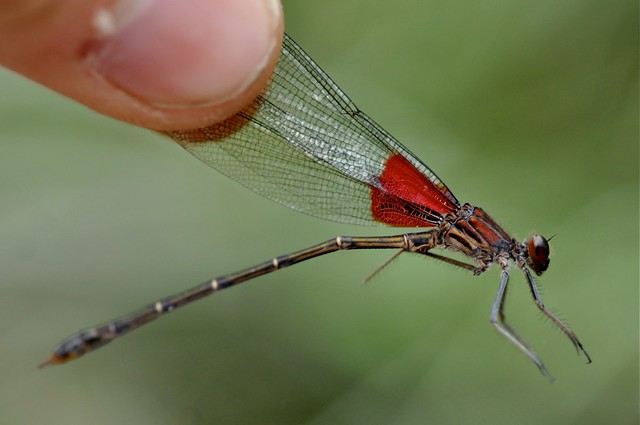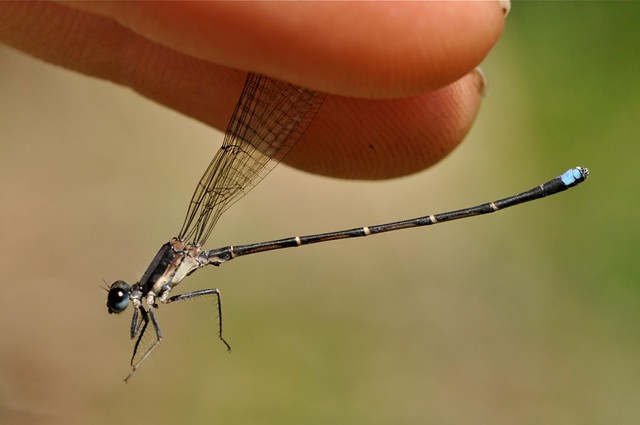There was another spot in North Carolina, however, that I desperately wanted to visit, and one I didn't get to the last time I was in Hatteras in June. This was in southern North Carolina bordering South Carolina. For plant enthusiasts, it was a legendary locale whose pocosins hide all sorts of weird and wonderful flora, including one species that is only found there and nowhere else.
The Green Swamp.
Now, beyond orchids, I'm not much of a plant fanatic, with things with wings and feathers grabbing my attention way before things with chlorophyll, but plants that eat things are pretty awesome and worth seeking. Also, being August, the pocosin's birds have all silenced and finding them can be a challenge. The Green Swamp's huge Longleaf Pine savannahs shelter some of the northerly Red-cockaded Woodpecker colonies and Bachman's Sparrows.
A Red-cockaded on a Longleaf Pine at Carolina Sandhills National Wildlife Refuge, just a couple hours south of Green Swamp in South Carolina. They are much more common and easier there.
Neither bird is easy to find and by the time we got to the Swamp it was late morning and there wasn't any activity. We'd already seen these anyway and because of our limited time here, we wanted to check out what else the pocosins had to offer. It was quickly discovered that Red-headed Woodpecker was exceptionally common and we encountered over a dozen birds, with multiple active nests in the deadwood. These are more aggressive and displace Red-cockadeds, even eating their eggs, so perhaps that is why we didn't see any of them. Flocks of Carolina Chickadee, Brown-headed Nuthatch and Tufted Titmouse roved along the edges of the pocosins, joined by numerous Pine Warblers and a Golden-winged Warbler.
Now however, our gazes were directed downward. We were looking for the iconic plant of Green Swamp, one found nowhere else in the world, and one needed a sharp eye to find one of these amongst the grasses. It didn't take long for us to find what we were looking for.
Venus Flytrap
It may come to you as a surprise that these tropical looking carnivores are only found here in the flatwoods of North and Northeastern South Carolina. There are some established elsewhere, but those are introduced and the only native plants grow here and nowhere else. The ones you get at your local grocery store flower shop that only last a few weeks are all captive-bred plants (they're easy enough to propagate) but you really need to see them in the wild to truly appreciate them. These are healthy, large clumps with beautiful colors ranging from bright green to a stunning crimson.
Feed me, Seymour!
Giddy with excitement, we continued our quest, for the swamp wasn't only home to the flytrap but a variety of other carnivorous plants. Most of us are familiar with our pitchers in northern spruce bogs in Ontario -
Northern Purple Pitcher Sarracenia purpurea var. purpurea
Spruce Bogs, basically floating mats of slowly-decomposing plant material, are like waterlogged deserts. There is very little nutrient present for plants to utilize and most plants there are very slow-growing and evergreen as a result. Purple Pitchers have overcome this by being able to extract Nitrogen and Phosphorus from insect bodies using partner bacteria, and thus obtaining most of their nutrients not from the peat, but from insect bodies. Pretty neat.
Pocosins are similar to bogs in the fact that they are very nutrient poor. They sit on groundwater and occur in poorly-drained soils in the Atlantic Coastal Plain. They too have their own species of sphagnum moss and resemble a bog somewhat, but instead of Black Spruce, they are dominated by pines, Longleaf Pine in the case of the Green Swamp, and look very different from bogs. It is in these environments, carnivorous plants reach their peak in species diversity and the Green Swamp holds 18 species, including four pitchers, all of which I was eager to find.
Yellow Trumpet Pitcher Sarracenia flava
The above two species were very common, with the huge trumpets protruding from the grasses all over the pocosin. The trumpet pitchers digest their food in a different way than the purples do - instead of utilizing partner bacteria, they create their own "digestive" enzymes to extract nutrient from their prey. They don't need water in their pitchers and many species actually are shaped to prevent rainwater from entering.
The other two species were both quite rare and relatively difficult to find. After about a half-hour of searching , I yelled to Kyle that I found the third - a short, clumpy pitcher that one could easily miss.
The last species was even more rare and honestly I didn't think we'd be able to find it. It's big and showy, and that makes it a species that is sought-after by plant poachers. These are poor excuses for human beings who have no interest in propagating these already imperiled plants, but instead dig them up to sell them on the black market for sometimes a huge profit. As a result, specific locales of the rarest pitchers are kept strongly defended and secret. The Green Swamp is a huge area and even with me telling you that we saw the plants in the swamp, it doesn't mean that if you were a plant collector that you'd be able to go out there and get them.
"LEV!!"
I heard Kyle yell and started running maniacally towards his voice, aggravating the monstrous chigger population in the swamp - Hell knows what he could've found, a Copperhead or something, and then I saw them.
Hooded Pitcher Sarracenia minor
These guys had somehow managed to get past the poachers and their little colony was the only one to be seen in here. We bounced around taking pictures, taking care not to tread on the surrounding Sweet Pitchers and Flytraps.
Besides being rare, this plant also has an incredible adaptation (besides eating insects) -
If one looks at the back of the pitcher, one notices these little translucent spots along the top. Because the pitcher's hood covers the entry hole, an insect will enter the plant by pushing it aside, seeking the false nectar the plant is producing. Once inside, the insect will try to get out by going towards a source of light - the back of the plant. Unfortunately for the bug, it will hit the plant and fall down into the pit of death. Nature, you scary!!
With that, we left the Green Swamp. We both agreed to visit again, for it is a huge area and has a whole bunch of neat things in it, and is a rapidly disappearing habitat that will last who knows how long.
Of course, I couldn't leave the swamp without taking some of it with me - not a Hooded Pitcher or a Venus Flytrap, but hundreds of chiggers. At first I dismissed the sporadic itching as Poison Ivy, which was common in the swamp, but about an hour later I found them all, which resulted in a frenetic attempt to get them off involving rubbing alcohol and tweezers, but that largely failed. I decided I was going to take it like a man and just let them feed until they dropped off, like ticks, and that'd be that. It worked, but the bites, I discovered, itched like the fleas of a thousand camels. Kyle got away with about a dozen. I had thousands. They started at my feet and evenly covered the rest of my body dispersing somewhere around my chin. I've been parasitized by botflies, ticks, mites, vampire bats, nematodes, and hell knows what else, but these are the worst. After using a half bottle of industrial Cortizone cream, I discovered that didn't work either.
It was going to be a bloody itchy pelagic.


